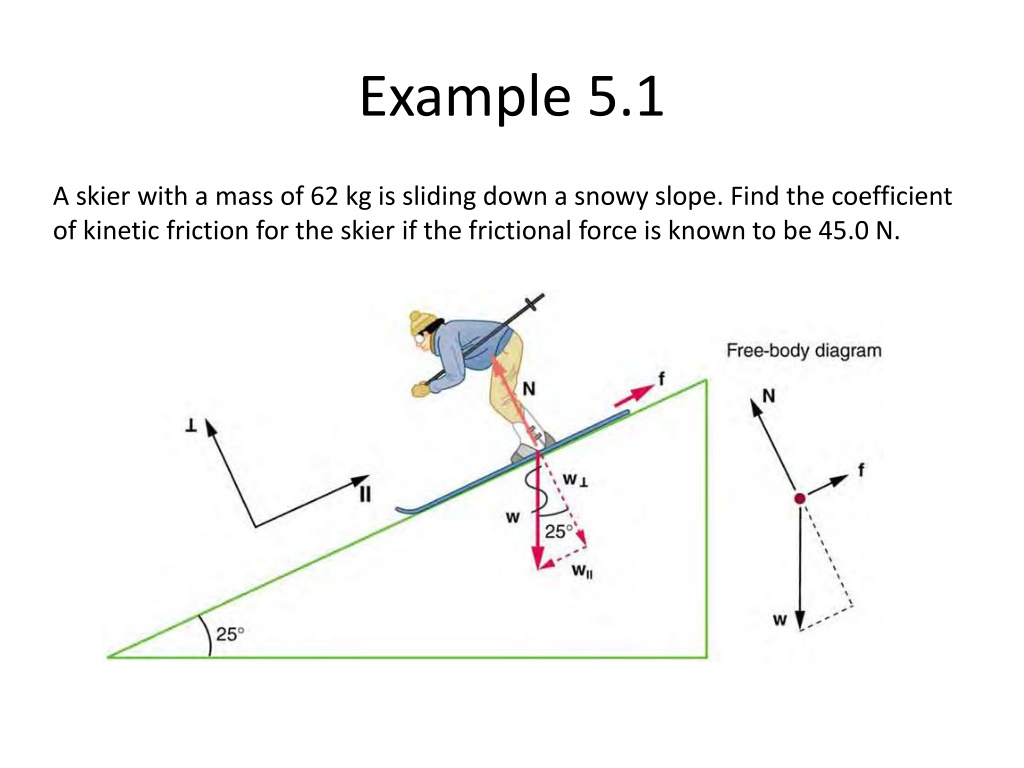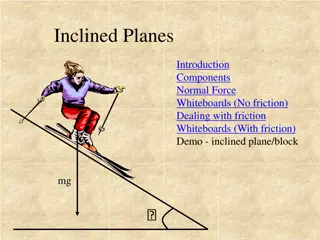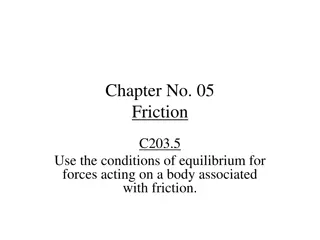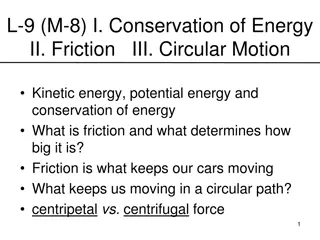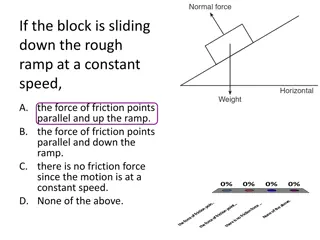Physics Examples with Friction Problems
Various physics problems involving friction forces, including calculating coefficients of friction, determining maximum forces before sliding, and analyzing sled motion on snowy surfaces. These examples cover scenarios with skiers, workers on roofs, sled riding, and object pulling on horizontal surfaces.
Download Presentation

Please find below an Image/Link to download the presentation.
The content on the website is provided AS IS for your information and personal use only. It may not be sold, licensed, or shared on other websites without obtaining consent from the author.If you encounter any issues during the download, it is possible that the publisher has removed the file from their server.
You are allowed to download the files provided on this website for personal or commercial use, subject to the condition that they are used lawfully. All files are the property of their respective owners.
The content on the website is provided AS IS for your information and personal use only. It may not be sold, licensed, or shared on other websites without obtaining consent from the author.
E N D
Presentation Transcript
Example 5.1 A skier with a mass of 62 kg is sliding down a snowy slope. Find the coefficient of kinetic friction for the skier if the frictional force is known to be 45.0 N.
Worker on a Roof A worker stands still on a roof sloped at an angle of 36 degrees above the horizontal. He is prevented from slipping by a static frictional force of 390 N. Find the mass of the worker.
P4, Chap 5, OpenStax 4. Suppose you have a 120-kg wooden crate resting on a wood floor. (a) What maximum force can you exert horizontally on the crate without moving it? (b) If you continue to exert this force once the crate starts to slip, what will its acceleration then be? (Wood on wood: Coeff. of static friction = 0.40, Coeff. of kinetic friction = 0.20)
Sled Riding A sled is traveling at 4.00 m/s along a horizontal stretch of snow, as Figure 4.23a illustrates. The coefficient of kinetic friction is k = 0.0500. How far does the sled go before stopping?
A 65-kg package is pulled along a horizontal surface at a constant velocity. The pulling force has a magnitude, F = 95 N, which is applied at a 250 angle as shown below. Frictional force is also present. 1. Draw a free-body diagram for the package. 2. Resolve the 95-N force into horizontal and vertical components, in the diagram. 3. Determine the normal force. 4. Determine the frictional force. 5. Determine the coefficient of kinetic friction between the box and surface.
